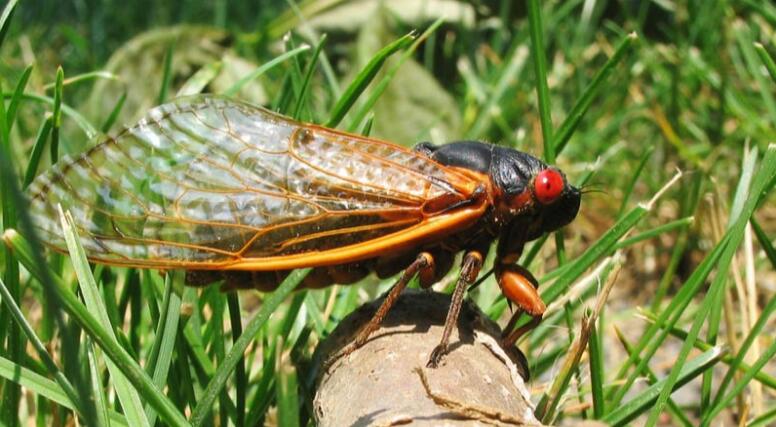After sleeping underground for 17 years, the 17-year-old cicada with red face and black body will usher in a big outbreak in mid-May. By then, these noisy gadgets will occupy the states of New Jersey, Pennsylvania, and Tennessee in the United States. After waiting for nearly 15 states, the entire woods and ground were covered, and the noise of cicadas was comparable to a big tsunami.
The group that broke out this time is called BroodX, which is the largest and most densely-covered of the dozen types of periodic cicadas that regularly appear in the eastern United States.
Why can scientists accurately predict their excavation time and excavation area? Why is there no similar periodic cicada appearing on such a vast land in China?
The hole left by the ground
What is the cycle cicada?
Cyclic cicadas belong to a large group of cicadas in the cicada family. Their life cycle is generally 13 or 17 years. This kind of cicada spends most of its life underground, relying on the roots of plants to survive.
They will emerge in the form of nymphs at the same time 13 or 17 years later, and complete the life cycle of emergence, mating, laying eggs, and death within 4-6 weeks of being unearthed.
Why is it 17 years?
So many auspicious numbers? Why do cycle cicadas choose 13 and 17?
What 13 and 17 have in common is that they are both prime numbers. The so-called prime number means that among the natural numbers greater than 1, except for 1 and the number itself, it cannot be divisible by other natural numbers.
For example, 4=2*2, then 4 can be divisible by 2, and it is not a prime number.
And 3=1*3 is the only solution, then 3 is a prime number.
In all natural numbers less than 1000, there are 168 prime numbers: 2, 3, 5, 7, 11, 13, 17, 19, 23, 29, 31, 37, 41, 43, 47, 53, 59, 61, 67 , 71, 73, 79, 83, 89, 97, 101, 103, 107, 109……
You can give it a try, can you find other numbers that divide them evenly?
For periodic cicadas, the prime number cycle is very important. This means that when they are unearthed, the probability of encountering a large number of natural enemies at the same time will be greatly reduced.
Among the common natural enemies of cicadas, the reproduction cycle of birds and lizards is generally about 1-2 years. In other words, if the cicada’s reproduction cycle is also about 1-2 years, then it will just be able to hit it. Choosing a prime number cycle means choosing a lower risk.
So, why is it 13 and 17 instead of 3, 5, and 7 which have a lower time cost?
Very simple, or to hide from natural enemies.
Assuming that the reproduction cycle of natural enemies is 2 years, if the cycle of the cicada is 3, 5, and 7, then the cycle of the two encounters will become 6, 10, and 14 years. Even if the cycle of the cicada escapes the first time, it cannot escape. Second time, third time! We must know that there are many types of natural enemies. It is very possible that the first time unearthed encounters a natural enemy population, and the second time unearthed encounters another natural enemy population. When it emerges, the periodic cicada will be eaten up!
And once you encounter it once, the natural enemies will reproduce more because they are full, and the next time the cicada is unearthed in the cycle, it will also face greater danger.
Because I want to completely avoid natural enemies. The cycle has to be longer! For example, 13 and 17, even if the cycles are superimposed, the probability of encountering natural enemies is greatly reduced, which is a good thing for the entire population.






